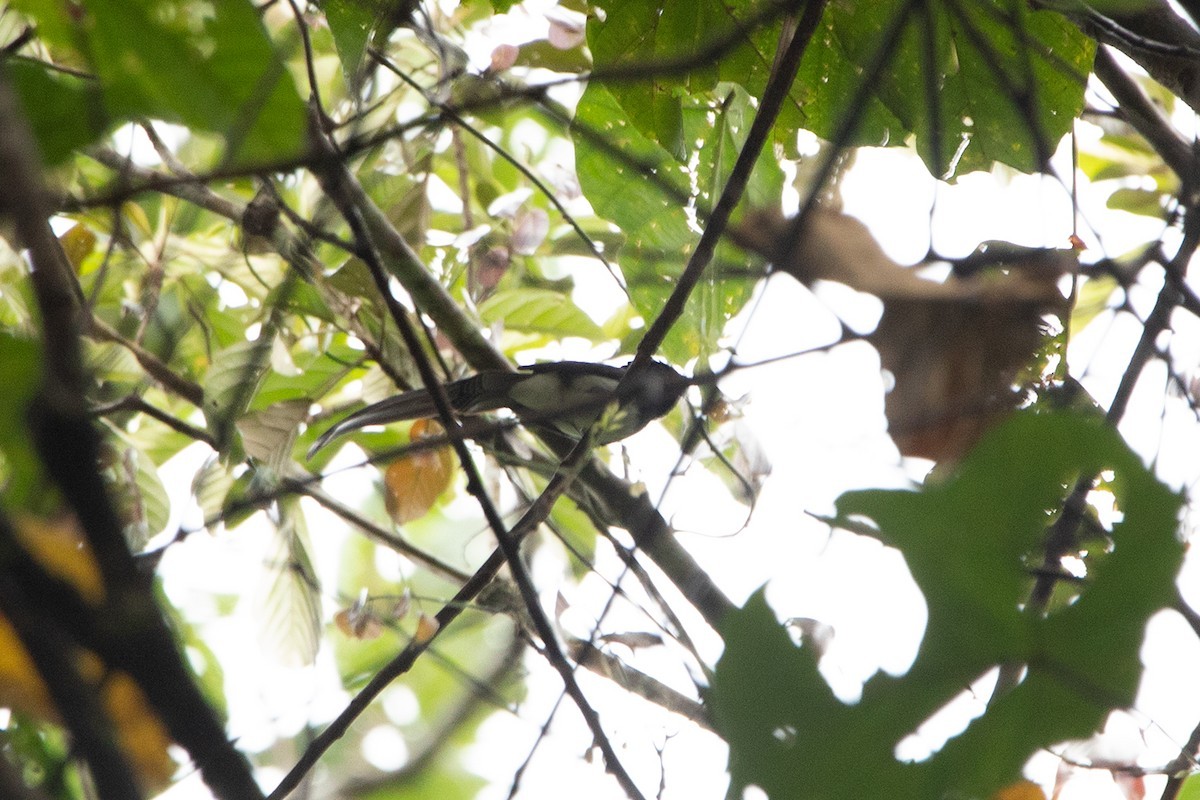Japanese Paradise Flycatcher
A species of Paradise Flycatchers Scientific name : Terpsiphone atrocaudata Genus : Paradise Flycatchers
Japanese Paradise Flycatcher, A species of Paradise Flycatchers
Botanical name: Terpsiphone atrocaudata
Genus: Paradise Flycatchers
Content
Description General Info
 Photo By Ayuwat Jearwattanakanok
Photo By Ayuwat Jearwattanakanok Description
The Japanese paradise flycatcher is similar in appearance to both the Amur paradise flycatcher and Blyth's paradise flycatcher, but is slightly smaller. Mature males have a black hood with a purplish-blue gloss which shades into blackish-grey on the chest. The underparts are off-white to white. The mantle, back, wings and rump are plain dark chestnut. The tail has extremely long black central feathers, which are shorter in immature males. Unlike the Asian paradise flycatcher there is no white morph. The female resembles the male but is duller and darker brown on the chestnut areas. It has black legs and feet, a large black eye with a blue eye-ring, and a short blue bill. The song is rendered in Japanese as tsuki-hi-hoshi, hoi-hoi-hoi, which translates to Moon-Sun-Stars and gives the Japanese name of the bird サンコウチョウ (三光鳥) sankōchō (literally, bird of three lights, i.e. moon, sun, star, from san three + kō lights + chō bird). 
Size
20 cm
Nest Placement
Tree
Feeding Habits
Japanese Paradise Flycatcher primarily consumes insects, with foraging likely resembling that of the closely related T. paradisi. It employs specific hunting techniques and foraging methods, which are adapted to its insectivorous diet.
Habitat
Japanese Paradise Flycatcher's natural habitat includes shady mature deciduous forests, mixed forests, and plantations typically found in valleys and on low hills, generally characterized by the presence of streams. This species adapts well to both broadleaf evergreen forests in southern regions and darker subtropical evergreen forests, including mixed types. While in Southeast Asian wintering grounds, it occupies areas up to certain elevations and frequents mangrove ecosystems. During migration periods, japanese Paradise Flycatcher can also be observed in more open hillside woodlands as well as suburban parks and gardens.
Dite type
Insectivorous
General Info
Feeding Habits
Bird food type
Distribution Area
The Japanese paradise flycatcher is mainly migratory and breeds in shady mature deciduous or evergreen broadleaf forest of Japan (southern Honshū, Shikoku, Kyushu and the Nansei Shoto islands), South Korea, Taiwan (including Lanyu island) and the far north Philippines. It is a non-breeding visitor to mainland China, the Russian Far East, Hong Kong, Thailand, Laos, Vietnam, Philippines, Malaysia, Singapore, and Sumatra, Indonesia. In Jeju-do of South Korea, Gotjawal Forest, a forest formed on a rocky area of volcanic AA Lava, is one of the important breeding sites of Japanese paradise flycatcher A recent survey detected a steep decline in part of the Japanese breeding population which has presumably occurred because of forest loss and degradation in its winter range. 

 Photo By Ayuwat Jearwattanakanok
Photo By Ayuwat Jearwattanakanok Scientific Classification
Phylum
Chordates Class
Birds Order
Perching birds Family
Monarchs Genus
Paradise Flycatchers Species
Japanese Paradise Flycatcher